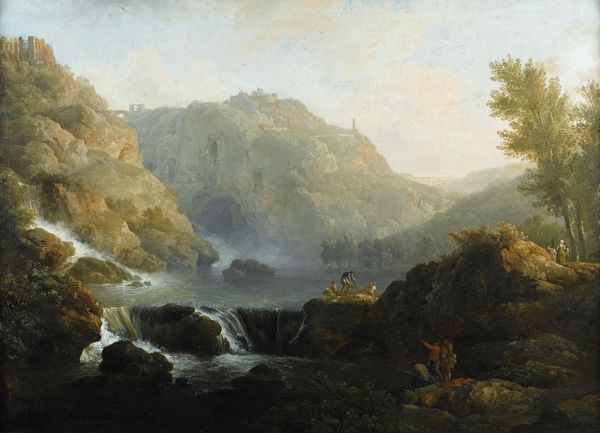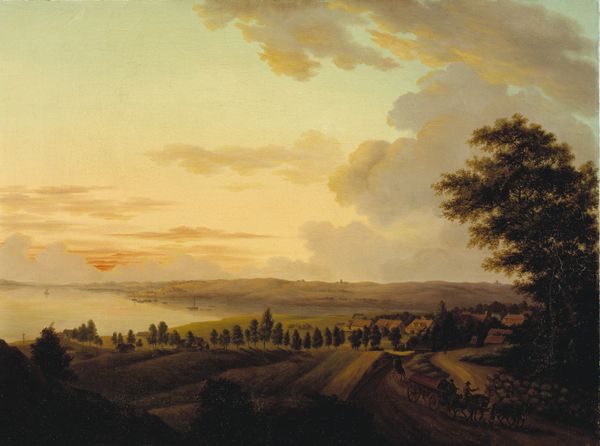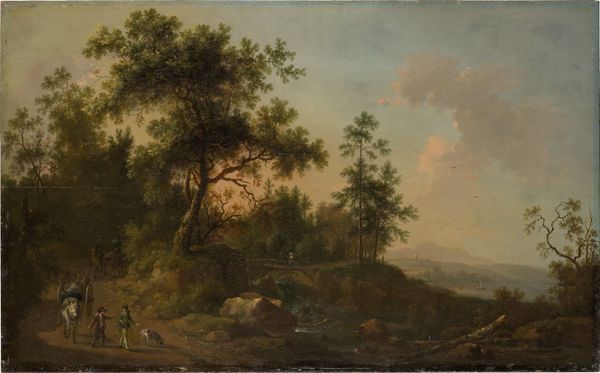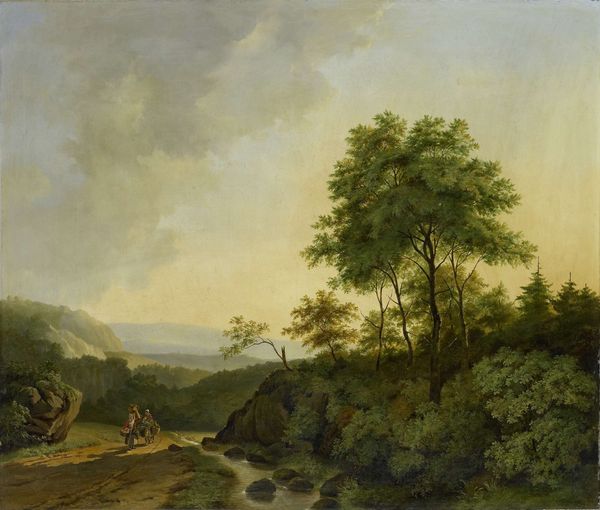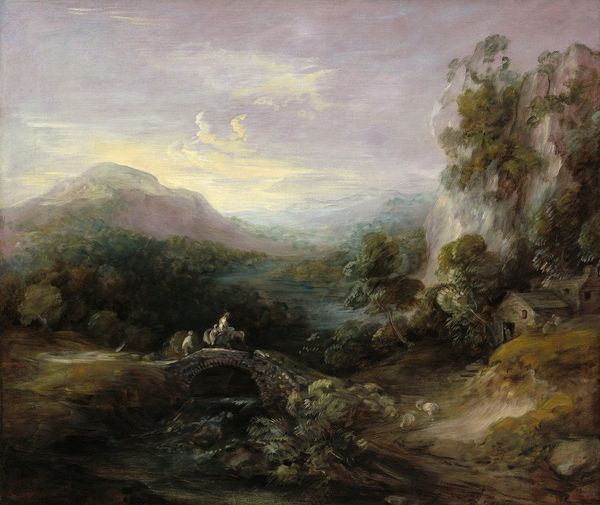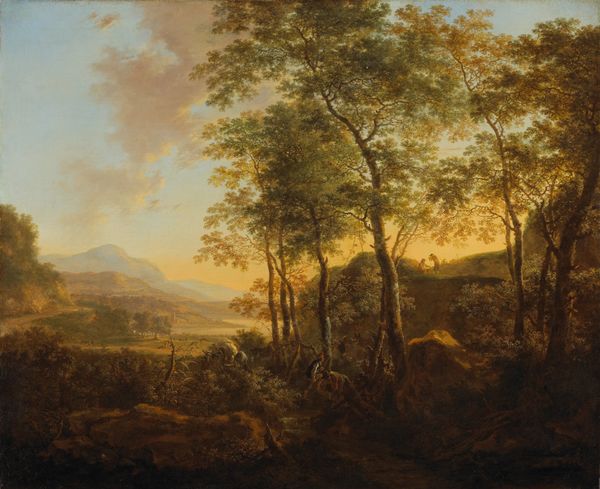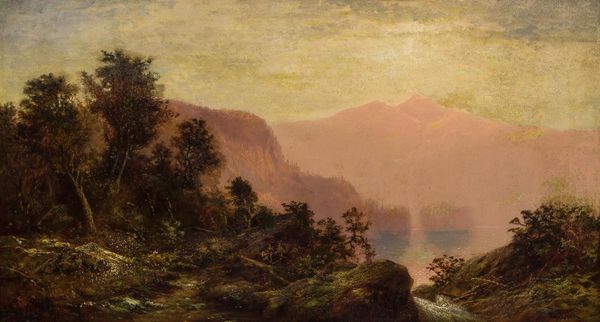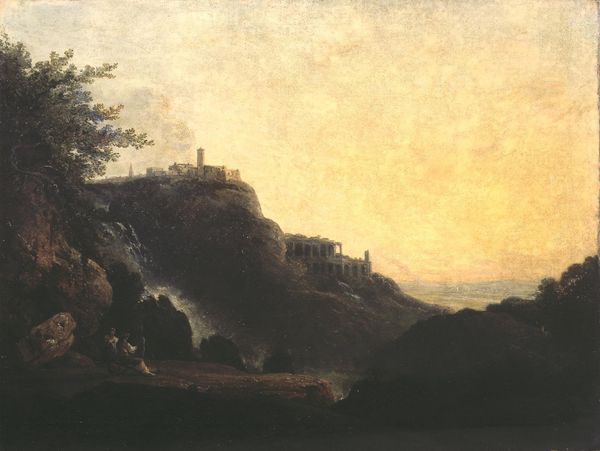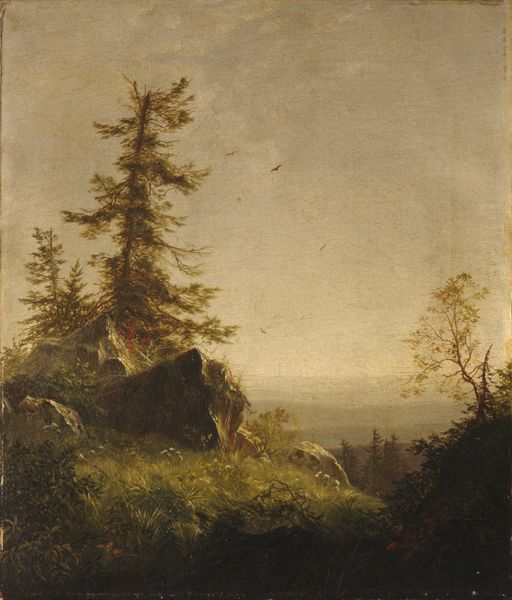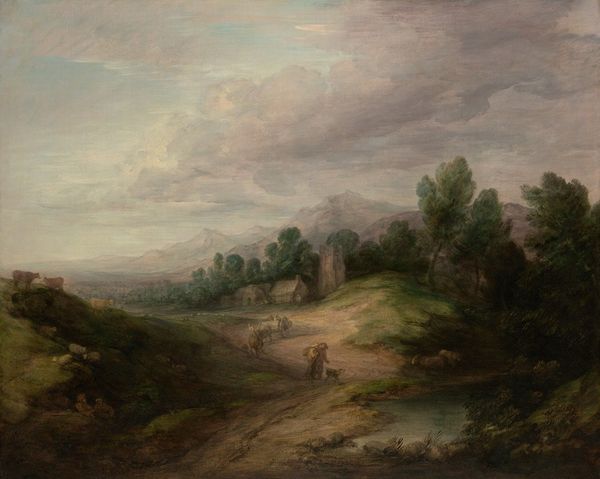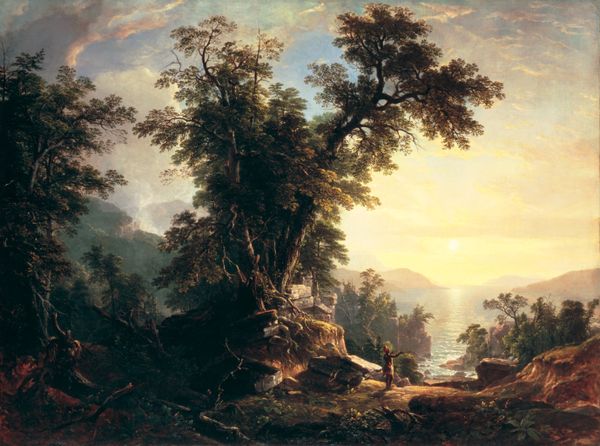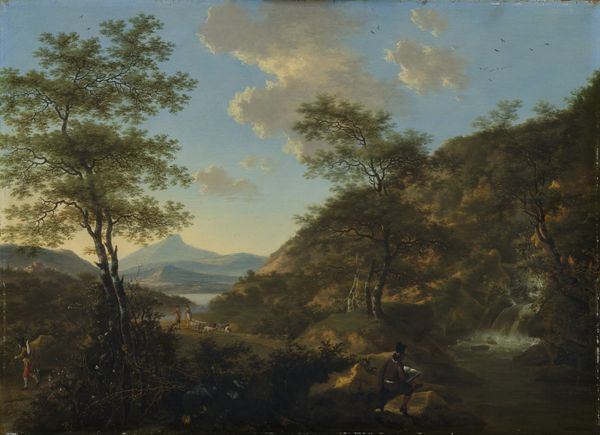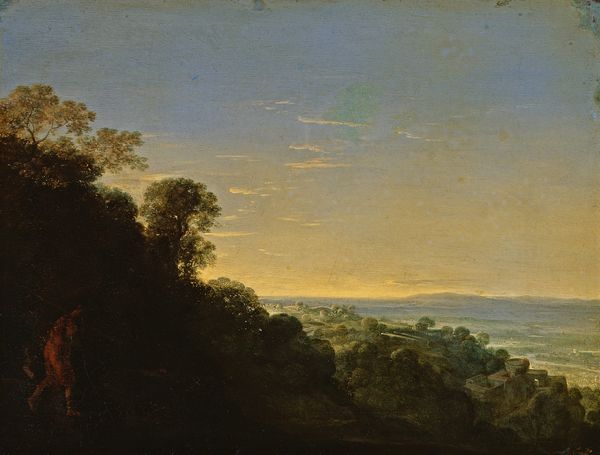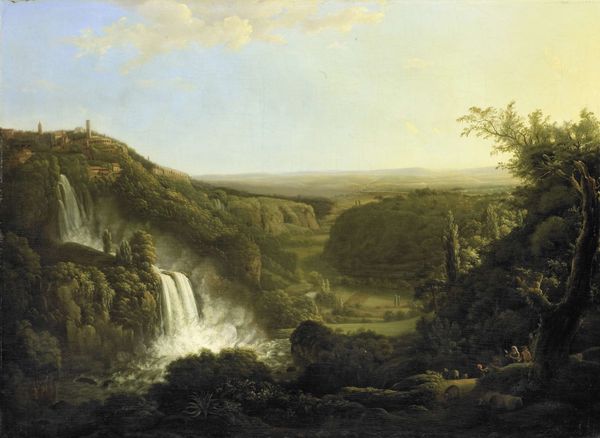
Copyright: Public Domain: Artvee
Editor: Here we have Thomas Moran's "Mountain Scene," an oil painting from around 1865. I'm immediately drawn to the stark contrast between the darkened foreground and the soft, luminous sky. What feelings or ideas does this contrast evoke for you? Curator: That contrast is key, isn't it? Consider the symbolic weight of light and darkness. Throughout art history, light has signified enlightenment, divinity, hope. In contrast, darkness is often associated with the unknown, with fear, or even death. Moran uses these established symbols, but complicates them. The light isn't overwhelmingly present, it's a subtle dawn breaking, a promise rather than a guarantee. Do you see that castle ruin on the mountain's peak, shrouded in shadow? Editor: I do. It’s almost like a fairytale castle. Curator: Exactly. Castles represent power, permanence, order. But this one is ruined, suggesting the decay of those very concepts. Notice the deliberate placement—elevated, yet diminished. The emotional and psychological impact is significant. It’s not simply a beautiful view, it's a contemplation of time, loss, and the transient nature of human endeavor. What about the two tall trees on the right-hand side? What do they communicate to you? Editor: Hmm, I guess they look like silent observers, stoic in the face of this scene. Curator: Precisely. They are evergreens, signifying resilience, persistence. Moran sets up a visual dialogue between these symbolic elements—ruin and resilience, darkness and dawning light—creating a rich tapestry of meaning. And this visual vocabulary persists through art history. Editor: That's fascinating. I never considered how charged landscape could be with such deeply rooted symbols. Thanks, I will see landscapes with new eyes now.
Comments
No comments
Be the first to comment and join the conversation on the ultimate creative platform.
